Amidst the rolling hills of the Hudson Valley, near the town of Claverack, is what’s known locally as the Farm at Miller’s Crossing. The nearly 200-year-old farmhouse is home to Meg and Jim Cashen and their extended family. The clapboarded house, built in the 1820s, is simple, warm and inviting. Its façade is classic and unadorned, save for the front portico, which has Greek Revival touches.
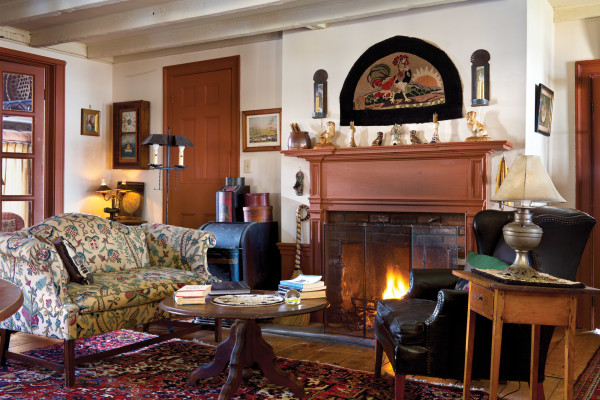
In the living room hangs an unusual, arched rug depicting a crowing rooster. A country craft, rug hooking was first taken up by voyaging seafarers.
Steve Gross & Susan Daley
Having inherited the property from Jim’s parents, the Cashens moved from Long Island to the former 200-acre dairy farm—with no intention of ever farming. Like so many other farms in the region, Miller’s Crossing had gradually declined and finally lain fallow.
The Cashens, reaching retirement age, assumed that the property’s agrarian days were permanently ended. Then something unexpected happened: their son Chris Cashen and his wife, Katie Smith, pursuing a shared passion for certified organic farming, began working the fields, raising vegetables, herbs, and flowers, along with a small herd of beef cattle. The burgeoning farm-to-table movement, of which the Hudson Valley was an early epicenter, had come along at just the right time for them.
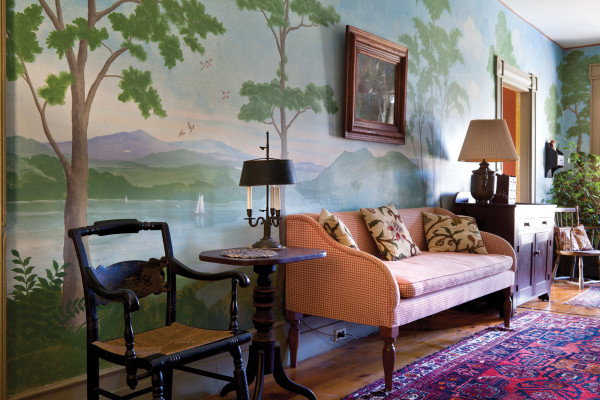
A sweeping, hand-painted mural of a Hudson River scene is painted on the wall of the entrance hall, which is wide enough to provide seating on a gingham-covered sofa.
Steve Gross & Susan Daley
Fluctuating fortunes have always plagued this region of New York. The beaver-pelt trade of the 1600s faded away, as did the unlikely and short-lived whale-oil industry, which had relocated from Nantucket to nearby Hudson when the whalers feared British attack during the War of 1812. After more than 150 years of continuous cultivation, tired soil had ruined the Valley’s prime crop, wheat. Many farmers moved west, abandoning their fields and barns.
When Meg Cashen arrived at Miller’s Crossing, she set out to re-create the 19th-century farmhouse ambiance that had almost become extinct. An antiques dealer for many years, Meg added primitive chests and patchwork quilts, framed samplers and hand-hooked rugs. The Hudson Valley was a repository for handcrafted items dating to the late 1800s. That’s when, after the Philadelphia Centennial Exposition of 1876, Colonial antiques and reproductions came into favor, along with “primitives” and folk art. The Exposition had featured a reconstruction of a Colonial kitchen, and also a Women’s Pavilion devoted to the female production of domestic products such as ceramics, woodcarvings, and woven goods.
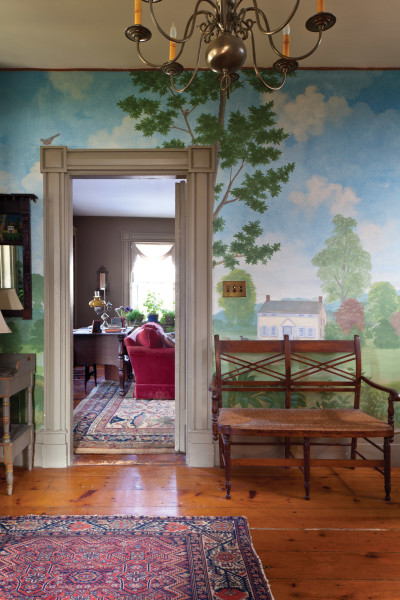
A portrait of the Cashen house was painted into the scenic mural, following the custom of early-19th-century itinerant artists.
Steve Gross & Susan Daley
An early improvement made by the Cashens is the addition that holds a large, rustic, Colonial-style kitchen. “When we inherited the house,” Meg says, “the existing kitchen was a very dated renovation from the 1960s. It was really too small. We took down one of the old barns on the property and salvaged the timbers and siding so that the room ties into the old part of the house.” The well-worn wood shows history through nail holes, cracks, and dents. Salvaged lumber was used to build a stairway up to a loft area that connects with upstairs bedrooms. Part of the charm of this house is the quirky arrangement of rooms, which happens when old houses get updates and additions.
Skylights keep the kitchen bright during the day. Meg frequently cooks large meals, using the farm’s produce and herbs, for family, friends, and several farmworkers who board here during the busy season. People stop by often. Friendly farm dogs come in to curl up next to the woodstove.
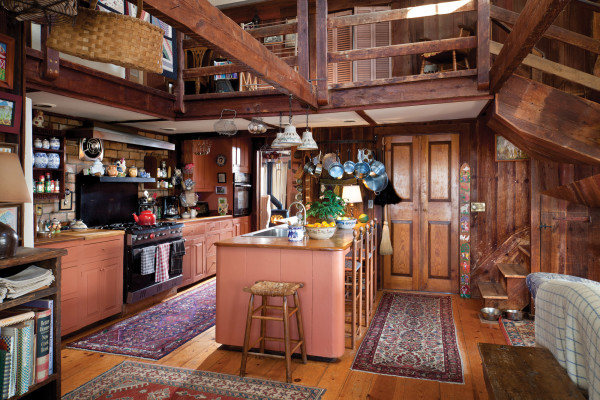
The accommodating kitchen was built of wood salvaged from an old barn on the property. Stairs lead to a loft area.
Steve Gross & Susan Daley
For the wide center hall, Meg and Jim Cashen commissioned a local artist to paint a scenic mural depicting their house and the shores of the Hudson River. Rendered in the manner of itinerant artists of the late 18th and early 19th centuries, the mural also references the luminous, naturalistic Hudson River School of landscape painting, which dates to about the same time the house was built.
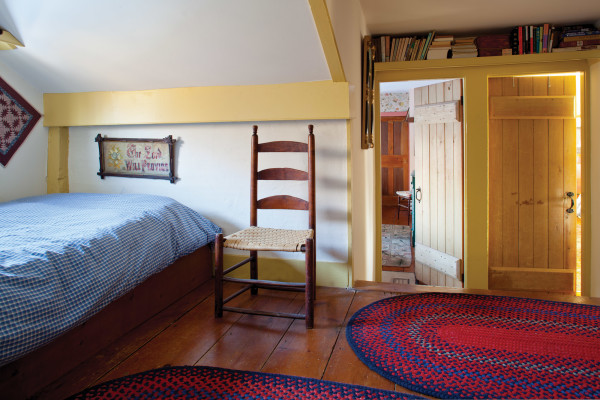
A single bed with a blue-checked cover is tucked into a gable. Hanging above it in a rustic walnut frame is a perforated paper sampler from the 1880s.
Steve Gross & Susan Daley
Today, Meg and Jim live in another house on the farm, while Chris and Katie and their children live in the old farmhouse. Reclaimed fields are flourishing, and the house too has been revived, in a fundamental rural language that tells the story of hand-worked items, vernacular art, and the beauty of the landscape.
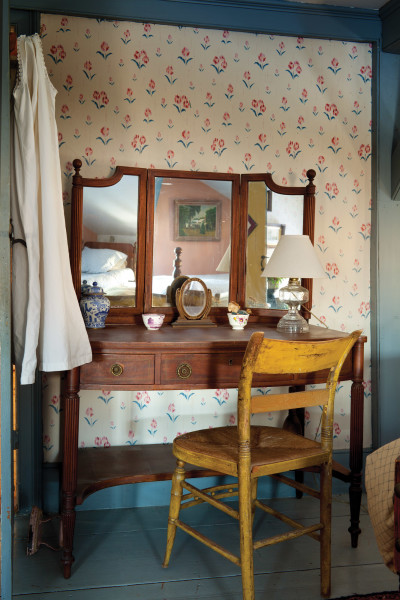
A mahogany Sheraton Revival vanity is paired with a thumb-back Windsor chair. The wallpaper is derived from antique block prints.
Steve Gross & Susan Daley







